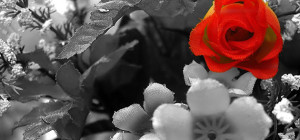
As an art teacher teaching my students art, music, and the discipline of ceramics and using clay, I had decided that it simply wasn’t enough to show them how to hand-build a clay piece. As the students advanced in skill and thought, their knowledge on the background of this field of art needed to expand as well. I created this list of information for my students as a worksheet to be distributed in their art folders. Students in junior high and above were quizzed on the information. For younger students, the information can be adapted to different levels. Underlined words are the answers and can be omitted if turned into a worksheet.
Notes on Clay and Ceramics:
o Ceramics is the art of using clay; pottery and sculpture are what you can make with clay.
o Clay is made up of layers of sediment (basically, dirt and minerals) pressing into each other. The sediment is held together by water, making it like a solid mud. Depending on the minerals, the clay can be many colors – brown, gray, red, green, and white.
o The finest white clay you can use is called porcelain.
o Clay begins to dry when air touches the surface, causing water to evaporate.
o Wrapping wet clay in plastic is the best way to keep it from drying out.
o When clay dries, it shrinks about 13% of its original size.
o As clay dries, it creates clay dust, which is very harmful to breathe in, and should only be cleaned up by a wet sponge.
o Before clay can be used, it should be prepared in order to get rid of air pockets and ensure an even consistency. One way is to repeatedly throw the clay, gently, at a flat surface – this is called wedging.
o Another way to prepare clay is to fold the clay into a lump, digging your fingers or knuckles into the clay and folding it over again, then repeating. This is called kneading.
o As the clay dries, it goes through many stages. The first stage is called leather hard, when the clay is still moist and flexible, but holds a shape and can be carved into. The next stage is called bone-dry when the moisture is gone and the clay can now be fired. The last stage is called bisque, which is when the clay has already been fired and is ready for glaze.
o A type of oven that heats clay to over 2000 degrees is called a kiln.
o Once a piece of clay has been fired, it is waterproof.
o Throwing is a term meaning to use clay on a pottery wheel.
o A watered down clay mean to act as a ‘glue’ when attaching clay pieces is called slip.
o Extruding is like using a pasta maker – you push clay through a shape and it takes the shape it was pushed through.
o When you use a clay tool and carve into clay (or build on top of it), it’s called Relief.
o Indenting is when you press an object into the clay, creating a texture transfer.
o Incising is when you carve shapes (holes) out of a piece of clay.
o To score clay means you are roughing up the surfaces of the clay where you are going to attach pieces together. This MUST be done for pieces to stick together.
o Slab-building means you create flat pieces of clay to attach together, like building a gingerbread house.
o After a piece of pottery has been bisque fired, it can be glazed. Glaze is a chemical compound that is brushed or painted onto the clay, then re-fired. It is deceiving because the color the glazed appears before it is fired is not the color it will turn out after it is fired.
o Ceramic pieces are glazed both for decoration and to protect the clay.
o Some glazes contain lead, meaning they are not meant to be used for dinnerware. Because of this, you must always check the label to make sure it is food-safe.
o Glazing was first an Asian invention.
o Some of the finest pieces of decorated pottery are called China, because this is where they were first created.
o Molds have been used to increase pottery production, by creating the same shapes over and over, much faster.
o Artist’s Pottery is created by artists more for decorative and expressive purposes than for function.
o Manufactured pottery is created by factories more for functional and profit purposes.
o When pottery was first invented it changed people’s lives because people had a place to store their food, water, and seeds, food could stay fresher and farming became more prominent as hunting dwindled down, ending the nomadic lifestyle. Because of the perfection of the firing technique, pottery shards are the most common archaeological finds, meaning a piece of pottery can last for thousands of years (they become as hard and sturdy as stone and do not decompose).







